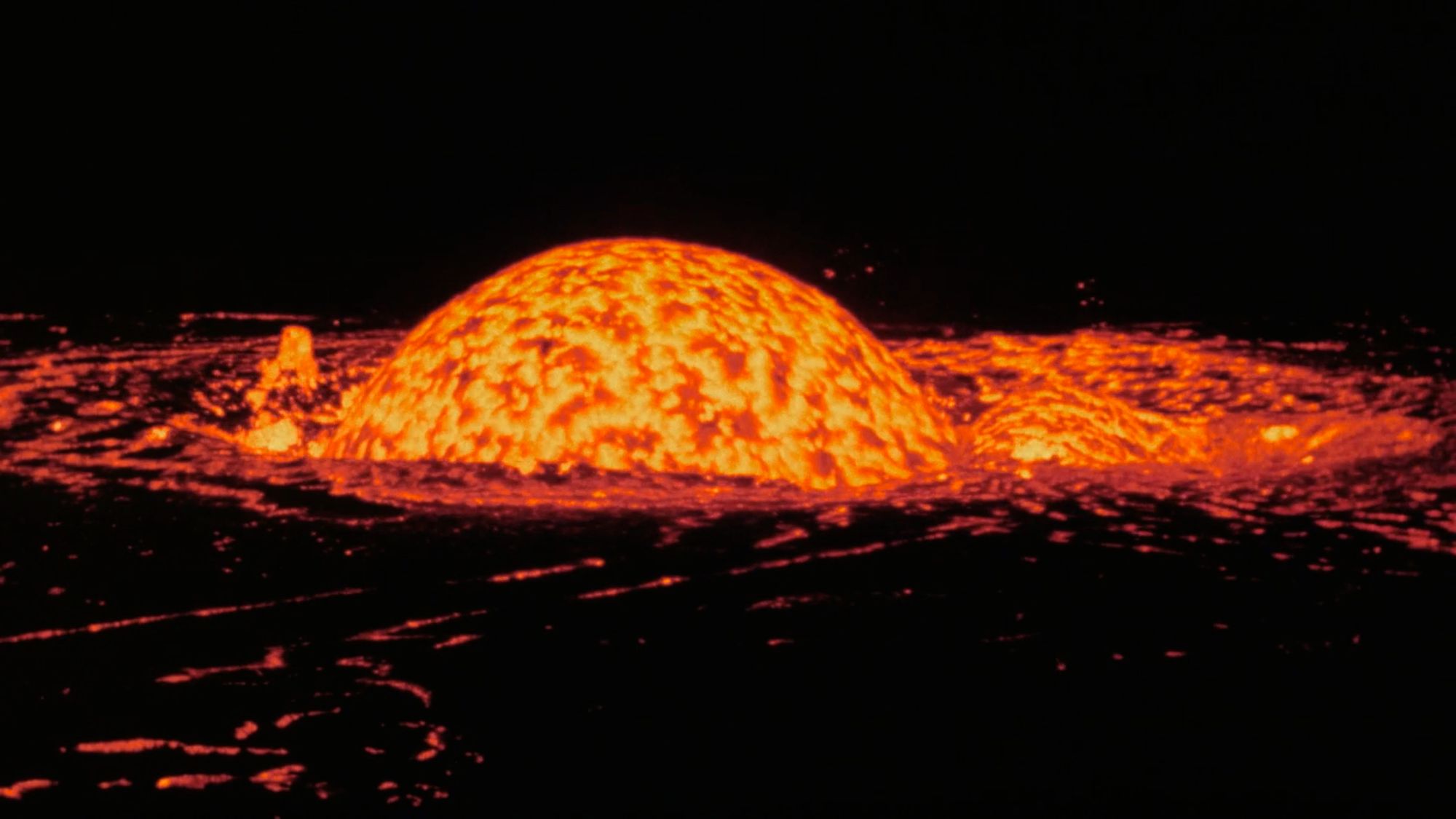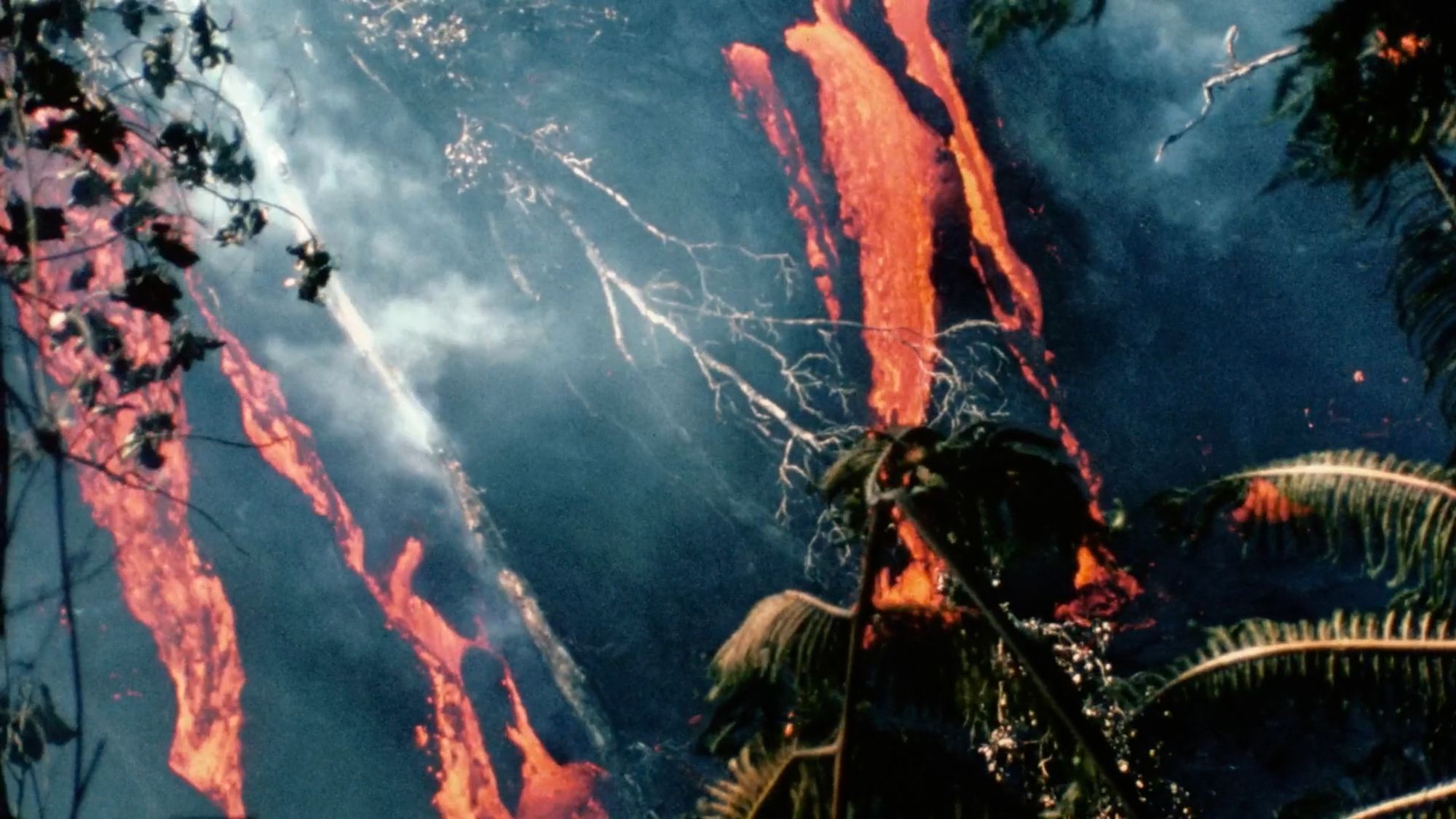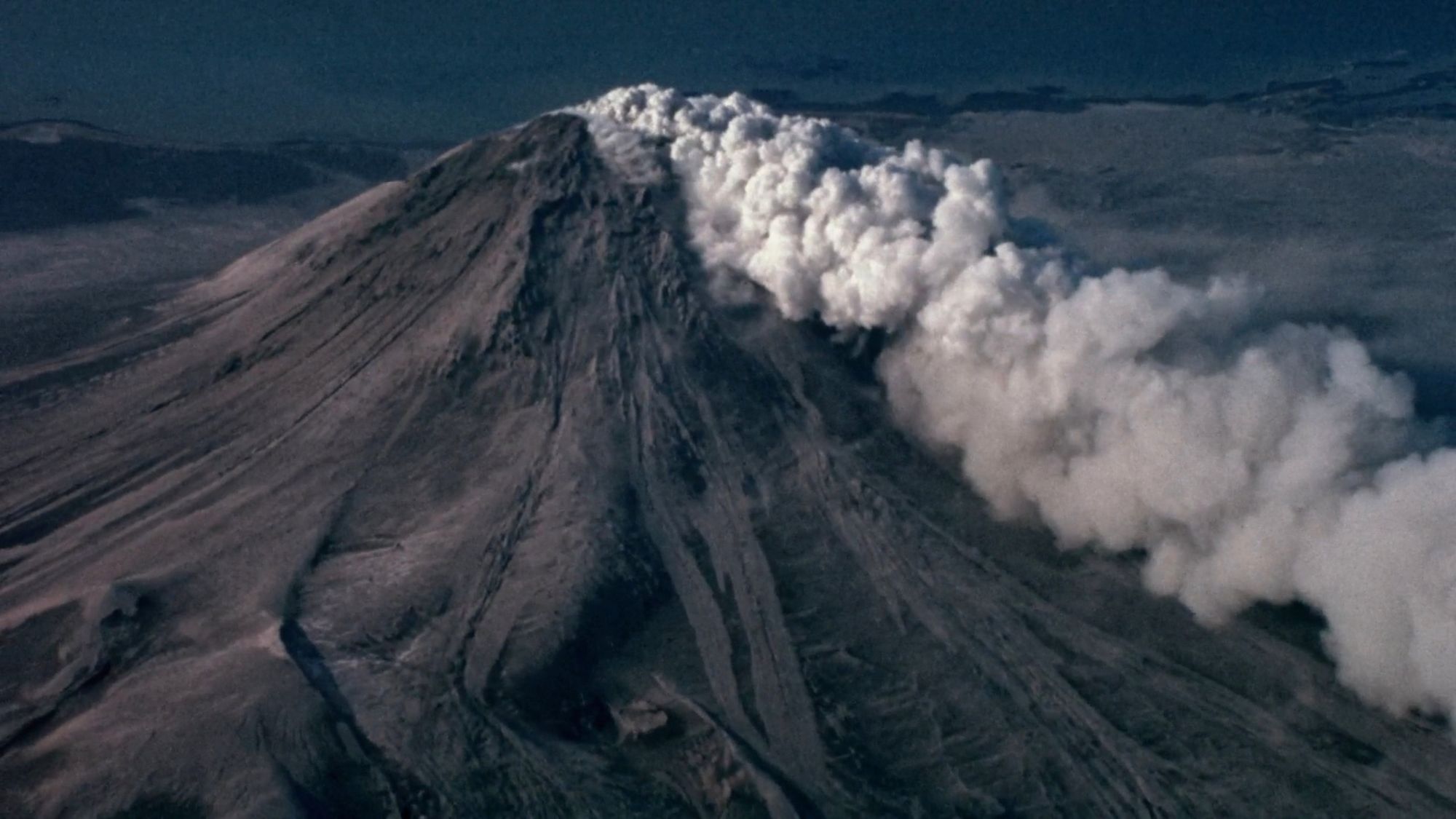The Fire Within: A Requiem for Katia and Maurice Krafft: A Movie Review
Werner Herzog celebrates the volcanic imagery of the Kraffts, wrestled from “the claws of the devil.”

A few months ago I went to see Sara Dosa’s Fire of Love — a non-fiction feature about Katia and Maurice Krafft, narrating over mesmerising lava footage from the French volcanologists’ archives.
Its dramatic footage, fascinating facts about one of Earth’s most awesome natural features, and focus on the joyful, adventurous spirit and love between the Kraffts made Dosa’s film one of my favourite cinema visits of 2022.
When I saw the poster for Dosa’s Fire of Love in the cinema listings, I mistook it for Werner Herzog’s latest documentary — which I had already seen the trailer for, and knew was focused on the Kraffts and their footage. I had been keeping an eye out for it, hoping it would pop up in a local movie theatre.
I have been keeping an eye out for Herzog’s film since, curious to see how it compares. As I suspected, The Fire Within skipped a cinema run and went directly to television through distributors such as BBC Storyville and ARTE.
Cinema distribution is fucked… but that’s a topic in itself.
The Kraffts spent their lives studying and filming volcanoes, their effects on nature, people, and the wildlife around them, with something of a zeal. They died together in a volcanic eruption in Japan on June 3, 1991, leaving behind an incredible archive that included unreleased footage.
It is unusual to have two non-fiction films cover the same subject and be released so close together. It is also kind of amazing. If you like one, see the other — you’re almost guaranteed to like it, too. Each expands and deepens the Krafft story and view of their work, and brings a distinct perspective. Together they create a birds-eye view taken from 2022, about thirty years after the fact.
Broadly, Dosa’s film focuses on love, and Herzog’s on death. The two great mysteries and subjects. Both filmmakers are genuinely enthralled with the magic contained in the footage itself.

As much as I appreciated and enjoyed the tone of narration in Fire of Love, nobody narrates like Werner, and in The Fire Within he is on top form. He has a way of pulling the viewer in and describing things in ways that are hard to forget. He finds phrases that sear into the mind.
Unlike Fire of Love, the narration is unapologetically unromantic. Though Herzog commends the “unity and togetherness” of the Kraffts, and how it allowed them to wrestle images “from the claws of the devil,” the real focus is on the spectre of death that followed them while they followed volcanoes.
“This here is not meant to be another extensive biography. What I’m trying to do here is celebrate the wonder of their imagery.”
Herzog describes his goal simply, as a celebration of their imagery. His film is that, but it does more in the process.
That includes making acute observations in a way that strikes as profound and pertinent. For example, he notes how volcanic eruptions create temporary apocalyptic environments. Towns shrouded in dust thick enough to blot out the sun during daylight hours for weeks and months, hampering daily life. Could volcanic activity serve as a preview of potential future, widespread and permanent conditions, caused by human behaviour, Herzog asks. It’s a simple hypothetical with a strong ring of truth.
While Dosa sees the Kraffts as scientists with a mysterious sense of adventure and artistic temperament, Herzog describes them more simply as scientists who became filmmakers, and ended up doing little science of their own. Which seems pretty accurate — and they became filmmakers whose work he clearly admires, so saying it doesn’t feel like a jab, as much a typically blunt observation.
Another contrast is that in Dosa’s film, you learn a surprising amount about volcanoes. You end up knowing a bunch of interesting facts and distinctions about them you probably didn’t before. It’s never the focus, but you pick up a nice amount of knowledge along the way. In The Fire Within the focus is fixed straight on the human story, its artistic and emotional qualities, and related meaning.

On a personal level, Herzog is fascinated by the unusual way the Kraffts chose to spend their lives. This is a theme that runs through all of his work, fiction and non-fiction. He studies people on the fringes of society who do incredible things, and sees the Kraffts, or at least the most authentic versions of themselves, as members of that group.
The narration shifts to something close to a sneering tone describing the increasingly eccentric get-up of the Kraffts as they became known as minor celebrities. Herzog links this to moments of faking reactions to get certain shots, and quirky contrivances that look straight out of a Wes Anderson movie (which Dosa’s film rolls with, and makes part of the fun).
He seethes at the inflatable chairs the team sit on around base camp, suggesting they must have thought it was cool. He does not think much of the large metal helmets they briefly tried out, which look dramatic but he assures us have never been used in earnest by serious volcanologists.
Herzog’s steadfast refusal to indulge in superficiality is lovable in a cranky way. You know what you are getting with him. It is a very consistent perspective, and he admires more than he criticises. He is blunt, but truthful — a balance he has long-since perfected in his non-fiction narration, and which has not lost its edge or capacity to engage.
In common with Dosa’s film, The Fire Within shows the side of the Kraffts, and really, in particular Maurice, that embraced risk in a compulsive, reckless, and ultimately self-destructive way. The Kraffts had lucky escapes before their fatal 1991 expedition, and during that final expedition, Maurice insisted on staying while Katia wanted to leave for a volcano in the Philippines in the last few days. This adds an extra tragic overtone to their deaths, while showing the (heartbreaking) strength of their bond.
The film probes into facts and details around events. It dismisses the notion the Kraffts influenced media members to take dangerous positions due to their presence, for example. Herzog also has a wont to find things in footage others hadn’t noticed, and here that includes what is perhaps the last, eery image of the Kraffts on film — taken by a Japanese volcanologist under some duress.
On a positive note: have I mentioned the lava footage? It is droolingly cool, awesomely powerful, and quietly sublime. The footage shown also differs significantly from what Dosa selected. If there is overlap it must only be for seconds. And in any case, seeing this footage twice wouldn’t be nearly enough. I want it as a screensaver on all my devices. It is more than worthy of having two documentaries celebrate it.
The Fire Within added to and deepened my fascination with the Kraffts and volcanoes that Fire of Love ignited. It tells a wonderful, at times tense, awe-inspiring, and haunting story, with visuals literally to die for.
If the subject captures your interest, you should have a ball watching both films. If you only have time for one and are not sure which to see? The choice in its simplest form is between love and death, the romantic and unromantic (not to equate those two pairings), and which focus holds the most interest as an accompanying tone to the footage.
And if you have not seen much of Werner Herzog’s recent nonfiction work, or perhaps even anything since Grizzly Man (2005)? This would be a great one to pick up on.
James Lanternman writes movie reviews, essays, and moonlit thoughts. You can reach him at [email protected].
Previously… Living: A Movie Review
